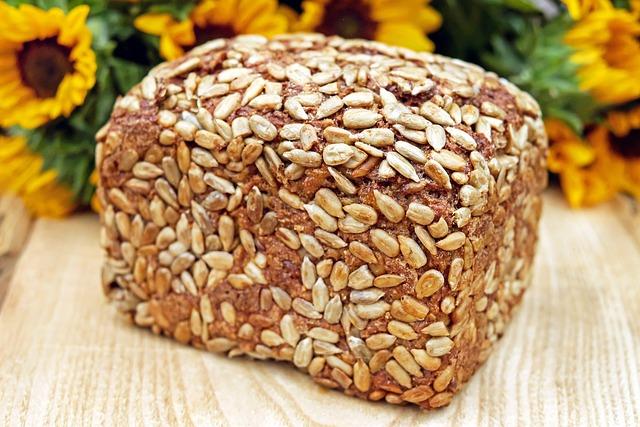In a world teeming with dietary fads and fleeting trends, the concept of eating whole foods emerges as a timeless beacon of nourishment and simplicity. Imagine a meal plan that not only satisfies your hunger but also fuels your body with vibrant energy and vitality. Building a balanced meal plan with whole foods is akin to composing a symphony of flavors, colors, and nutrients that harmonize to promote well-being. This approach invites you to explore the natural bounty of the earth, celebrating ingredients in their most authentic form. Whether you’re a seasoned culinary artist or a novice in the kitchen, this guide will illuminate the path to crafting meals that honor both your health and the integrity of your ingredients. Join us on a journey to rediscover the art of eating well, where every bite tells a story of balance, nourishment, and the joy of whole foods.
Crafting Nutrient-Dense Plates with Natures Bounty
Creating meals that are both nourishing and satisfying involves artfully combining the vibrant colors and rich flavors of nature’s offerings. Begin by choosing a variety of whole foods that cover the essential food groups. Whole grains like quinoa, brown rice, and oats provide a hearty base full of fiber and essential nutrients. Colorful vegetables, from leafy greens to root veggies, add not only visual appeal but also a wealth of vitamins and minerals.
- Proteins: Incorporate lean sources such as legumes, nuts, seeds, or ethically-sourced animal proteins.
- Healthy Fats: Avocados, olive oil, and nuts are excellent choices to add creaminess and richness.
- Fruits: Use fresh, seasonal fruits for natural sweetness and a boost of antioxidants.
To enhance the flavor profile and nutritional value of your meals, consider adding herbs and spices. Not only do they provide a punch of flavor, but they also offer unique health benefits. Remember, balance is key—aim for a variety of textures and flavors on your plate, ensuring each meal is a celebration of whole foods.

Harnessing the Power of Whole Grains and Lean Proteins
When crafting a meal plan rooted in whole foods, focusing on nutrient-rich components is key. Whole grains and lean proteins serve as the foundation for a balanced diet, offering a myriad of health benefits. Whole grains, such as quinoa, brown rice, and oats, are packed with fiber, vitamins, and minerals. These components not only aid digestion but also provide a sustained release of energy, keeping you fuller for longer. Lean proteins, like chicken breast, turkey, tofu, and legumes, are essential for muscle repair and growth, while also playing a crucial role in hormone production and immune function.
Integrating these elements into your meals doesn’t have to be complex. Consider these simple ideas to start:
- Combine quinoa with grilled chicken and a medley of colorful vegetables for a nourishing bowl.
- Create a hearty salad with mixed greens, chickpeas, and a sprinkle of sunflower seeds for a crunchy, satisfying meal.
- Prepare a comforting stir-fry using tofu, brown rice, and your favorite seasonal veggies.
By incorporating a variety of whole grains and lean proteins into your diet, you’re not only enhancing flavor but also promoting overall wellness.
Embracing Vibrant Vegetables for Optimal Health
Incorporating a rainbow of vegetables into your meals is a surefire way to enhance your diet with essential nutrients. These vibrant gems are not just pleasing to the eye but also pack a powerful punch of vitamins, minerals, and antioxidants. Consider adding a variety of colorful veggies to your plate to support optimal health. Here are some benefits and ideas to get you started:
- Red Vegetables: Rich in lycopene and anthocyanins, red veggies like tomatoes and red peppers can support heart health.
- Orange and Yellow Vegetables: Packed with beta-carotene and vitamin C, choices such as carrots and squash can boost your immune system.
- Green Vegetables: Loaded with folate, iron, and fiber, options like spinach and broccoli help maintain strong bones and a healthy gut.
- Purple and Blue Vegetables: Full of antioxidants, eggplants and purple cabbage can aid in reducing inflammation.
Experiment with different cooking methods such as roasting, steaming, or grilling to bring out the natural flavors of these veggies. By creatively incorporating these colorful options into your meals, you can enjoy a diverse and nutrient-rich diet.

Balancing Flavors and Textures for a Satisfying Experience
Creating a harmonious meal involves more than just selecting nutritious ingredients; it requires an artful balance of flavors and textures that make every bite delightful. Imagine a plate where crunchy roasted nuts dance alongside creamy avocados, and tangy citrus complements the subtle sweetness of roasted vegetables. This balance not only pleases the palate but also ensures a diverse range of nutrients.
- Mix and Match Textures: Pair soft, velvety components like mashed sweet potatoes with crisp, vibrant elements such as fresh greens or toasted seeds.
- Layer Flavors: Use spices and herbs to add depth. A sprinkle of smoked paprika can transform simple grilled chicken, while a dash of fresh basil elevates a tomato salad.
- Contrast Temperatures: Serving warm grains with a cool, refreshing cucumber salad creates an engaging contrast that enhances the meal’s appeal.
By thoughtfully combining these elements, you craft meals that are not only nutritionally complete but also a feast for the senses, making every dining experience both satisfying and memorable.
In Conclusion
In the symphony of nutrition, building a balanced meal plan with whole foods is akin to composing a harmonious melody, where each note plays a vital role in crafting the final masterpiece. As we conclude this culinary journey, remember that the essence of whole foods lies in their simplicity and the profound nourishment they offer. Embrace the vibrant colors, diverse textures, and rich flavors that nature provides, allowing them to guide your choices and inspire your creativity in the kitchen.
In this ever-evolving landscape of health and wellness, let your meal plan be a reflection of your unique tastes and nutritional needs. By prioritizing whole foods, you not only nourish your body but also cultivate a deeper connection to the world around you. So, step forward with confidence, armed with the knowledge and inspiration to transform your meals into balanced works of art, and savor the profound impact this can have on your well-being.
